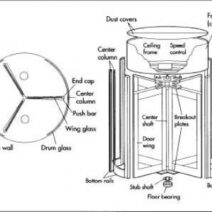Climate change is a multifaceted phenomenon, engendering a plethora of consequences for our planet. One of the more insidious ramifications of this global crisis is ocean acidification, a process that is often perceived as an ancillary aspect of climate change. However, the intricate relationship between climate change and ocean acidification merits close examination, revealing not only overlapping causes but also an interconnected web of ecological implications that should garner greater public concern.
At its core, climate change refers to the long-term alteration of temperature and typical weather patterns in a place. While this phenomenon is driven primarily by anthropogenic activities, such as the burning of fossil fuels and deforestation, its ramifications extend well beyond terrestrial ecosystems. The world’s oceans play a vital role in regulating the Earth’s climate, absorbing approximately a quarter of the carbon dioxide emitted into the atmosphere. As a result, the escalating concentration of carbon dioxide not only warms the atmosphere but also alters the chemical composition of seawater. This sets the stage for ocean acidification, characterized by the decrease in pH levels of the ocean.
The observation that these two pressing environmental concerns—climate change and ocean acidification—are intrinsically linked is not merely a coincidence. Both phenomena stem from a common source: increased carbon dioxide emissions. When carbon dioxide enters the ocean, it reacts with water to form carbonic acid, leading to a decrease in pH. This chemical reaction underscores the profound interconnectedness between atmospheric changes and aquatic ecosystems.
This interaction between carbon dioxide emissions and the ocean serves as a poignant reminder of humanity’s ability to alter natural processes. As terrestrial temperatures rise, so do the levels of carbon dioxide in our atmosphere, resulting in greater absorption by marine environments. The intricate balance that has historically sustained oceanic life is being disrupted, signaling a potential crisis for marine biodiversity.
The consequences of ocean acidification extend far beyond simple chemistry. Various marine organisms, particularly those that rely on calcium carbonate for their shells and skeletons—such as mollusks, corals, and some plankton species—are experiencing significant challenges in maintaining their structural integrity in increasingly acidic waters. This alteration disrupts the base of the marine food web and can lead to dwindling fisheries, ultimately affecting food security for millions of people who rely on these resources.
Moreover, the implications of ocean acidification are not confined to marine life alone. The economies that depend on productive marine ecosystems are equally at stake. Coastal communities that thrive on fishing, tourism, and recreation are witnessing an unsettling transformation. As shellfish populations decline and coral reefs—the planet’s biodiversity hotspots—become increasingly vulnerable, the ripple effects on human livelihoods can be profound, threatening cultural heritage and economic stability.
While the causative relationship between climate change and ocean acidification is evident, it is essential to consider the societal dimensions that complicate our response to these interconnected issues. The urgency to mitigate climate change is often obscured by political inertia and misinformation, creating an alarming gap in public awareness and action. This lack of urgency invites a deeper examination of why these crucial phenomena often remain relegated to scientific dialogue rather than public discourse. Is it a matter of misconception about the immediacy and severity of these threats, or is there a deeper societal reluctance to confront the consequences of our actions?
The fascination surrounding climate change and ocean acidification might stem from their complexity. They epitomize the unseen consequences of human indifference, with both phenomena unfolding gradually yet inexorably. This gradualism can foster a sense of complacency, misleading individuals into underestimating the threats posed by the changing climate and acidifying oceans. Each minor increment in temperature or pH level may appear innocuous; however, the cumulative effects precipitate a formidable crisis that requires immediate and sustained action.
Public education is paramount. To foster a robust understanding of the link between climate change and ocean acidification, comprehensive outreach initiatives must transcend scientific communities. Engaging narratives that illustrate the tangible consequences of these phenomena on local ecosystems and economies can galvanize communities into action. The intricate interplay of environmental systems warrants a concerted, multi-faceted response that incorporates scientific insight, community engagement, and bold policy measures.
In essence, the intersection of climate change and ocean acidification reflects a broader narrative about our relationship with the planet. The phenomena serve as stark reminders that our actions have repercussions beyond our immediate surroundings. The oceans are not merely a separate entity; they are intricately woven into the fabric of the Earth’s climate and ecological health.
As the urgency for climate action escalates, understanding the innate connections between these challenges becomes imperative. We must recognize that mitigating climate change will inherently involve addressing ocean acidification. To safeguard marine life and, in turn, human well-being, we must forge pathways that acknowledge our interconnectedness and inspire collaborative solutions. Only through collective action can we hope to reverse the damage and achieve a sustainable equilibrium between human activity and the natural world.








